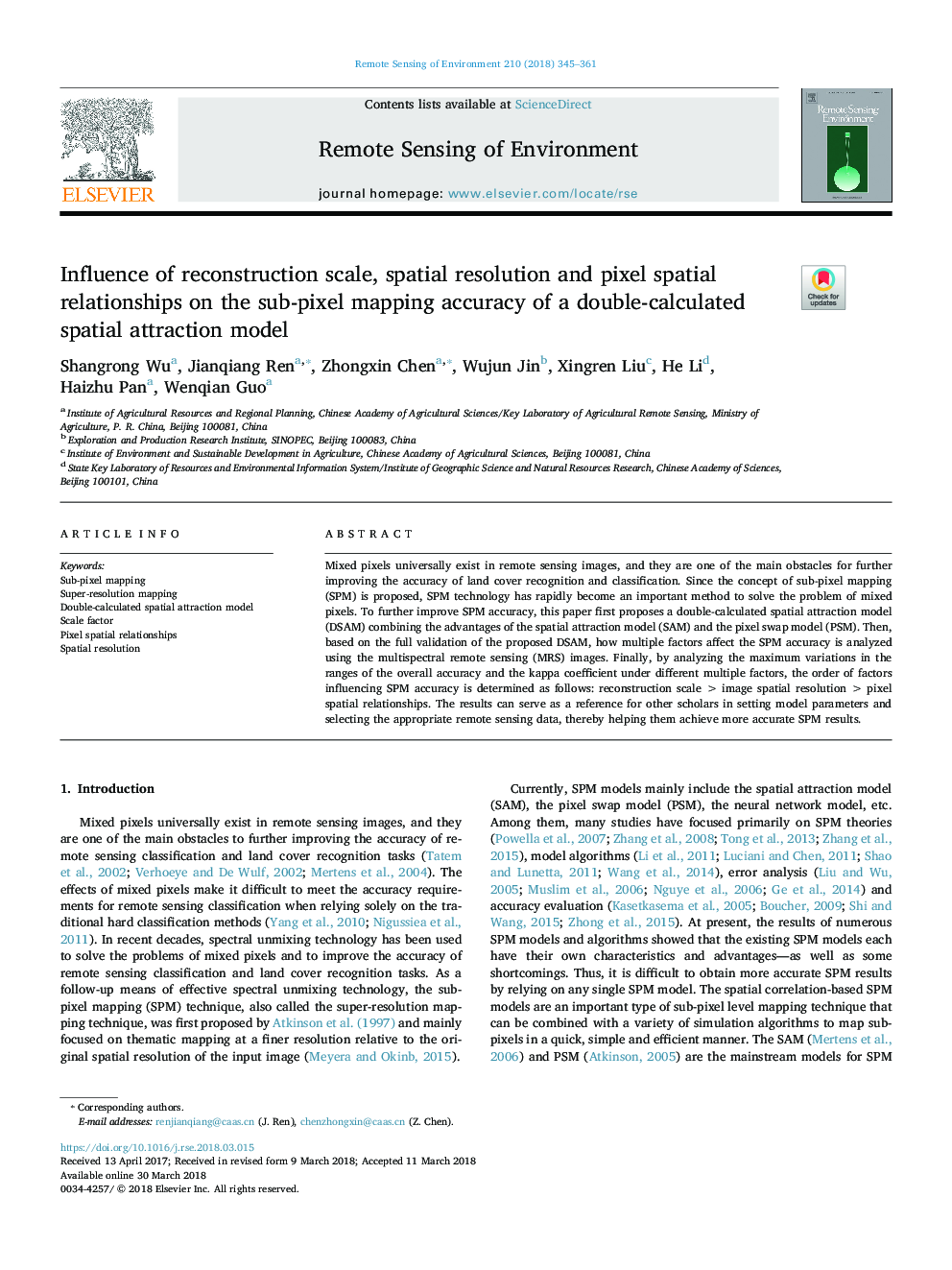| Article ID | Journal | Published Year | Pages | File Type |
|---|---|---|---|---|
| 8866606 | Remote Sensing of Environment | 2018 | 17 Pages |
Abstract
Mixed pixels universally exist in remote sensing images, and they are one of the main obstacles for further improving the accuracy of land cover recognition and classification. Since the concept of sub-pixel mapping (SPM) is proposed, SPM technology has rapidly become an important method to solve the problem of mixed pixels. To further improve SPM accuracy, this paper first proposes a double-calculated spatial attraction model (DSAM) combining the advantages of the spatial attraction model (SAM) and the pixel swap model (PSM). Then, based on the full validation of the proposed DSAM, how multiple factors affect the SPM accuracy is analyzed using the multispectral remote sensing (MRS) images. Finally, by analyzing the maximum variations in the ranges of the overall accuracy and the kappa coefficient under different multiple factors, the order of factors influencing SPM accuracy is determined as follows: reconstruction scaleâ¯>â¯image spatial resolutionâ¯>â¯pixel spatial relationships. The results can serve as a reference for other scholars in setting model parameters and selecting the appropriate remote sensing data, thereby helping them achieve more accurate SPM results.
Related Topics
Physical Sciences and Engineering
Earth and Planetary Sciences
Computers in Earth Sciences
Authors
Shangrong Wu, Jianqiang Ren, Zhongxin Chen, Wujun Jin, Xingren Liu, He Li, Haizhu Pan, Wenqian Guo,
